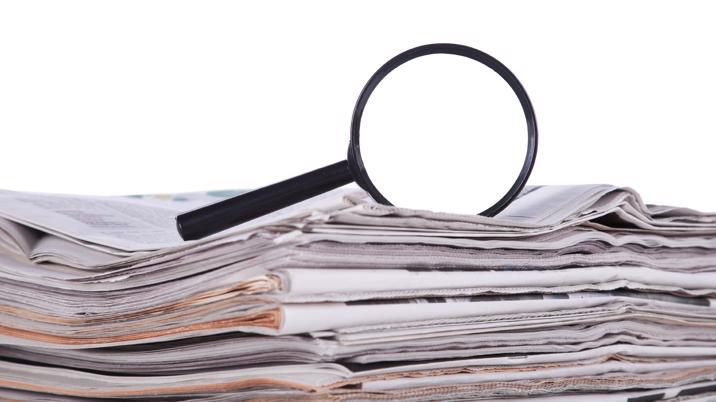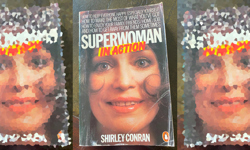
Instant self-publishing via social media, forums, comments threads, blogs, hyper-local titles and the like, is now a given. We are deluged by others’ unedited perspectives at every turn.
And while these have their place, that rawness is increasingly undermining mainstream media.
The endlessly discussed financial crisis facing newspapers has much to do with this. Staff numbers have been reduced dramatically, and titles have haemorrhaged experience in direct proportion.
Newspaper salaries, most markedly in the regions, have never been in the stratosphere, but professional experience has always come at a premium of sorts, so sub-editors have found themselves the object of accountants’ unwanted attentions.
You will even find some organisations where the designation of ‘journalist’ is used casually as a synonym for ‘reporter’: the corollary being that subs aren’t actually journalists at all.
But while the contraction of editorial budgets has played its part in the demise of the sub, so has technology. QuarkXpress, Adobe InDesign et al have enabled the operational emphasis – for those who will allow it – to be reduced to pulling copy into boxes. Giving someone a saw doesn’t make them a carpenter.
Giving someone a saw doesn’t make them a carpenter.
Division of labour
A glance back at what industry commentators observed a century ago shows what we all know: the more things change, the more they stay the same. What reporter or sub would fail to recognise the following study in newsroom relationships and division of labour?
In his 1903 book Practical Journalism, Edwin Shuman writes: “The work of copy reading is likely to be drudgery to a man of active temperament who has grown accustomed to the rush and varied excitements of a reporter’s life.
“If he be fond of seeing himself in print, he also misses the keen pleasure of authorship when he reads the paper each morning, unless he can find it in his headlines and in the satisfaction of knowing that he has made clear and condensed English out of some bungling reporter’s diffuse story.
“He knows that the reporters call him a butcher and resent the ruthless way in which he cuts out their finest flourishes. The copy reader is an obscure individual. The public knows the reporter and it knows the editor, but of the man who toils through the night putting copy on a hook, the public knows little or nothing.”
The world of the sub-editor is almost as arcane to reporters as it is to complete outsiders. With the rapid technological changes of the last three decades, subs have taken on a bewildering number of tasks that go way beyond preparing material for a printed title.
Now, you will also find subs monitoring reporters’ tweets (and indeed those of a host of others); keeping an eye on the mad world of readers’ comments threads (was there ever a more thankless task?); customising copy and pictures for a variety of online uses; feeding websites. The long list goes on, but it is largely invisible to those making the financial decisions in an organisation.
No one who writes for publication – not even Giles Coren – should work without the benefit of a sub-editor, that first reader, whose reaction is crucial and telling.
If the sub is bored, confused, or keeps being ‘tripped up’, the writer has failed. The sub is the critic and the safety net. A few deft tweaks – or substantial cuts – and a piece can be transformed.
As Shuman observes: “… it is wise to make every statement undergo the scrutiny of a second pair of eyes before it can get into the composing room.”
It is not too late to re-harness the skills of experienced subs.
Quality control
Without the sub-editor as a judicious, well-informed backstop, lame, illiterate and muddled material is served up to the reader.
Digital demands a great deal more from news brands. Audiences are far better informed, and often know more about the subject of a story than the journalist writing it. News sites are now as much about interaction as information, offering the potential for a new collaboration, feeding research and discussion of stories.
The opportunities are not always seized. Guardian journalist Nick Davies described the scale of churnalism, claiming 80% of the stories featured in the ‘quality press’ were not original, and only 12% were actually generated by reporters.
Original content – and arguably original thought – is thinly spread. We under-estimate readers’ intelligence at our peril.
My local newspaper is run by one of the ‘big four’ publishers, widely known to have done more than its fair share of cuts and reorganisations.
Flicking through it recently, I found a page 5 lead that did not make a word of sense. I have re-read its nine paragraphs many times since. I have shown it to colleagues and no one understands it.
Presumably it was written by a junior reporter. It amounts to some kind of free advertisement because it seems to be about a business’s promotional gimmick, and cannot have been read by a sub-editor worthy of the name.
So, the essentials of journalism, the needs and interests of our readers, transcend time and technology. M Lyle Spencer, a staffer of The Milwaukee Journal, and in 1917 the author of News Writing, describes them thus: “The power to estimate news values properly; the stories to write; the ability to work rapidly, and the power to present facts accurately and interestingly.
On accuracy, he tells us: “Accuracy comes first. It is necessary to write with a nice regard for exact shades of meaning… An accurate writer avoids looseness of thinking and inexactness of expression as he avoids libel.”
On clarity, he says: “To secure interest, a word must be clear and forceful. It should not be technical or big, but simple. The biggest words in the average newspapers are the handiwork and pride of the cub reporters. Yet clearness, force, brevity all demand little words – simplicity.”
Any kind of writer cannot achieve these standards while working alone.
One of the first people to undertake a sociological study of journalism was Jeremy Tunstall. Beginning his work in 1965, he interviewed a wide variety of journalists and this research formed the basis of his 1971 book Journalists at Work.
No one who writes for publication – not even Giles Coren – should work without the benefit of a sub-editor.
The ideal sub
A senior editorial executive told Tunstall what he saw as the twelve characteristics of an ideal sub-editor. All but number 6, which is a function of the days of type charts, blue pencils and em rules, apply today:
- A capacity to check and check and check.
- An organised mind.
- A sense of time. A good sub must always watch the clock.
- An understanding of type.
- An ability to assess length.
- An ability to count headlines.
- An ability to write clearly in a well-ordered way.
- An ability to write bright headlines.
- The knack of getting to the heart of the story.
- A clear understanding of when re-writing is necessary and when it’s not.
- A continuing sense of excitement about change.
- A capacity to cope with dull stories and get the best out of them.
Twenty-first century technology has given us truly fantastic tools with which to communicate, and more people than ever before can make themselves heard, and get themselves read.
It follows, though, that in order to maintain or build a reputation for journalism that is authoritative, accurate, trustworthy and engaging, whatever the platform, content must be produced with care, and pass through expert hands.
Without the sub-editor as a judicious, well-informed backstop, lame, illiterate and muddled material is served up to the reader.
Save our subs
It is not too late to re-harness the skills of experienced subs. If newspapers no longer want them, then someone else certainly should.
I am chilled by what Local World’s David Montgomery told the Commons Culture, Media and Sport committee in May: “We will have to harvest content and publish it without human interface. Journalists collecting stories one by one are hugely unproductive.”
Monty sees nothing wrong with publishing content that will not be edited. He told one trade magazine: “Local journalism is moving more towards self-publishing – by journalists and by an increasing number of self-serve contributors. Journalists will not be going through antiquated editing processes in future, they will be publishing directly on to different platforms.”
Music to the ears of libel and ‘reputation management’ lawyers across the land, no doubt. Legions of PRs will be delighted, too.
It is, however, short-termism of the worst kind, and I believe it could well be fatal for those media businesses adopting such a model.
So, this is a clarion call for a re-evaluation of every kind of copy handling and text subbing.
The very immediacy of digital makes the expertise of the rigorous sub more important than ever.
The essentials of journalism, the needs and interests of our readers, transcend time and technology.












